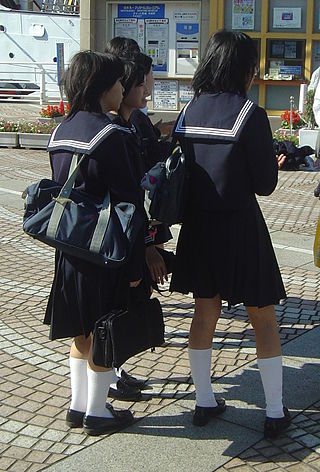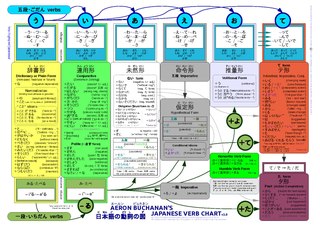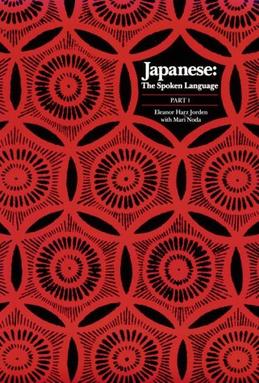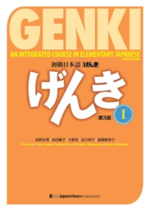Furigana is a Japanese reading aid consisting of smaller kana printed either above or next to kanji or other characters to indicate their pronunciation. It is one type of ruby text. Furigana is also known as yomigana (読み仮名) and rubi in Japanese. In modern Japanese, it is usually used to gloss rare kanji, to clarify rare, nonstandard or ambiguous kanji readings, or in children's or learners' materials. Before the post-World War II script reforms, it was more widespread.
Katakana is a Japanese syllabary, one component of the Japanese writing system along with hiragana, kanji and in some cases the Latin script.

Kanji are the logographic Chinese characters adapted from the Chinese script used in the writing of Japanese. They were made a major part of the Japanese writing system during the time of Old Japanese and are still used, along with the subsequently-derived syllabic scripts of hiragana and katakana. The characters have Japanese pronunciations; most have two, with one based on the Chinese sound. A few characters were invented in Japan by constructing character components derived from other Chinese characters. After the Meiji Restoration, Japan made its own efforts to simplify the characters, now known as shinjitai, by a process similar to China's simplification efforts, with the intention to increase literacy among the common folk. Since the 1920s, the Japanese government has published character lists periodically to help direct the education of its citizenry through the myriad Chinese characters that exist. There are nearly 3,000 kanji used in Japanese names and in common communication.
Language education – the process and practice of teaching a second or foreign language – is primarily a branch of applied linguistics, but can be an interdisciplinary field. There are four main learning categories for language education: communicative competencies, proficiencies, cross-cultural experiences, and multiple literacies.
The Japanese-Language Proficiency Test, or JLPT, is a standardized criterion-referenced test to evaluate and certify Japanese language proficiency for non-native speakers, covering language knowledge, reading ability, and listening ability. The test is held twice a year in Japan and selected countries, and once a year in other regions. The JLPT is conducted by the Japan Foundation for tests overseas, and Japan Educational Exchanges and Services for tests in Japan.

Test of English as a Foreign Language is a standardized test to measure the English language ability of non-native speakers wishing to enroll in English-speaking universities. The test is accepted by more than 11,000 universities and other institutions in over 190 countries and territories. TOEFL is one of several major English-language tests worldwide, including IELTS, Duolingo English Test, Cambridge Assessment English, and Trinity College London exams.

Secondary education in Japan is split into junior high schools, which cover the seventh through ninth grade, and senior high schools, which mostly cover grades ten through twelve.
TPR Storytelling is a method of teaching foreign languages. TPRS lessons use a mixture of reading and storytelling to help students learn a foreign language in a classroom setting. The method works in three steps: in step one the new vocabulary structures to be learned are taught using a combination of translation, gestures, and personalized questions; in step two those structures are used in a spoken class story; and finally, in step three, these same structures are used in a class reading. Throughout these three steps, the teacher will use a number of techniques to help make the target language comprehensible to the students, including careful limiting of vocabulary, constant asking of easy comprehension questions, frequent comprehension checks, and very short grammar explanations known as "pop-up grammar". Many teachers also assign additional reading activities such as free voluntary reading, and there have been several easy novels written by TPRS teachers for this purpose.

The modern Japanese writing system uses a combination of logographic kanji, which are adopted Chinese characters, and syllabic kana. Kana itself consists of a pair of syllabaries: hiragana, used primarily for native or naturalized Japanese words and grammatical elements; and katakana, used primarily for foreign words and names, loanwords, onomatopoeia, scientific names, and sometimes for emphasis. Almost all written Japanese sentences contain a mixture of kanji and kana. Because of this mixture of scripts, in addition to a large inventory of kanji characters, the Japanese writing system is considered to be one of the most complicated currently in use.

Japanese verbs, like the verbs of many other languages, can be morphologically modified to change their meaning or grammatical function – a process known as conjugation. In Japanese, the beginning of a word is preserved during conjugation, while the ending of the word is altered in some way to change the meaning. Japanese verb conjugations are independent of person, number and gender ; the conjugated forms can express meanings such as negation, present and past tense, volition, passive voice, causation, imperative and conditional mood, and ability. There are also special forms for conjunction with other verbs, and for combination with particles for additional meanings.
The Japanese language has two main types of verbs which are referred to as pentagrade verbs and monograde verbs.

Japanese: The Spoken Language (JSL) is an introductory textbook series for learning Japanese. JSL was written by Eleanor Harz Jorden in collaboration with Mari Noda. Part 1 was published in 1987 by Yale Language Press, Part 2 in 1988, and Part 3 in 1990. The series differs from most Japanese language textbooks in many ways, most basically in that it focuses exclusively on the spoken language and leaves discussion of any aspect of the written language to other textbooks, such as the parallel series Japanese: The Written Language (JWL).
The audio-lingual method or Army Method is a method used in teaching foreign languages. It is based on behaviorist theory, which postulates that certain traits of living things, and in this case humans, could be trained through a system of reinforcement. The correct use of a trait would receive positive feedback while incorrect use of that trait would receive negative feedback.
Muntinlupa Science High School, known as Muntinlupa Science or MunSci, is a special science public high school in the City of Muntinlupa, Philippines that provides a technical and science curriculum that aims to prepare students for careers in science and technology, math, and communication arts.
Mute English is a term coined in the People's Republic of China to describe a phenomenon where people cannot speak English well and have a poor listening comprehension as a second language, typically through the traditional method of English language teaching where English is only taught as a subject. The phrase is a calque of the Chinese phrase "哑巴英语". The phenomenon is sometimes referred to as Dumb English.
Japanese language education in the United States began in the late 19th century, aimed mainly at Japanese American children and conducted by parents and community institutions. Over the course of the next century, it would slowly expand to include non-Japanese as well as native speakers. A 2012 survey of foreign-language learners by the Japan Foundation found 4,270 teachers teaching the Japanese language to 155,939 students at 1,449 different institutions, an increase of 10.4% in the number of students since the 2009 survey. The quality and focus of dialogues in Japanese textbooks meant for English-speakers has changed since the 1970s. As of 2021, according to the Japan Foundation, 161,402 people were learning Japanese in United States.
The direct method of teaching, which is sometimes called the natural method, and is often used in teaching foreign languages, refrains from using the learners' native language and uses only the target language. It was established in England around 1900 and contrasts with the grammar–translation method and other traditional approaches, as well as with C.J. Dodson's bilingual method. It was adopted by key international language schools such as Berlitz, Alliance Française and Inlingua in the 1970s and many of the language departments of the Foreign Service Institute of the U.S. State Department in 2012.

S.S. Astro is a Japanese four-panel comic strip manga by Negi Banno about the lives of female teachers within a school at which they teach. The "Astro" in the title is actually an acronym abbreviating "Asahio Sogo Teacher's ROom", alluding to the school's name Asahio Sogo. The original title, Kyōkan Astro, plays on the fact that kyōkan (教官) is 'instructor' in Japanese, but the title uses the kanji kan (艦) meaning 'warship' in place of kan (官) meaning 'government service'. The manga started serialization in Houbunsha's seinen manga magazine Manga Time Kirara Carat on February 24, 2005, and the first bound volume was released on February 27, 2007. However, the manga has not appeared in the magazine since November 28, 2007. Yen Press licensed the series for release in English, and released the first volume on August 12, 2008.
Language pedagogy is the discipline concerned with the theories and techniques of teaching language. It has been described as a type of teaching wherein the teacher draws from their own prior knowledge and actual experience in teaching language. The approach is distinguished from research-based methodologies.
The Al-Kitaab series is a sequence of textbooks for the Arabic language published by Georgetown University Press with the full title Al-Kitaab fii Taʿallum al-ʿArabiyya. It is written by Kristen Brustad, Mahmoud Al-Batal, and Abbas Al-Tonsi and was first published in 1995; since that time, it has become the most popular Arabic textbook in the United States.







